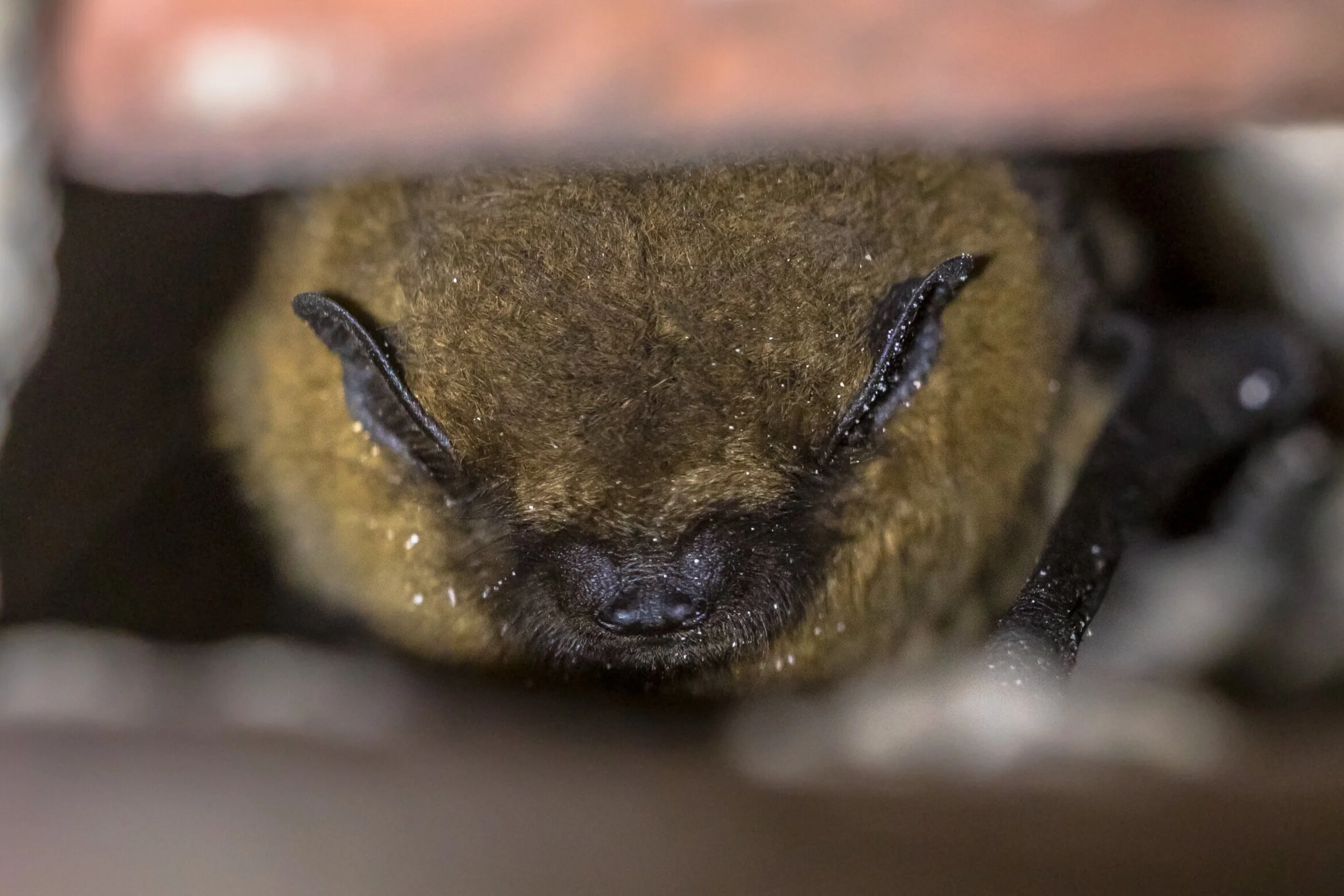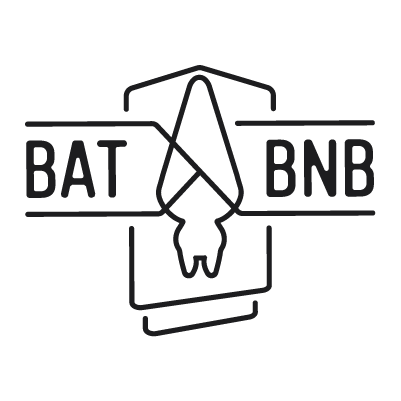Bats and their fight for survival: Hibernation and The deadly White Nose Syndrome
February 17 2022 – Harrison Broadhurst
As the Northern Hemisphere grows colder, wild animals must to find ways to survive the harsh winters. Over thousands of years, several bat species have developed a unique way of shutting down their bodies to survive. But bats in North America are facing a new threat, and how does this supposed survival strategy now leave them vulnerable? Read on to learn about hibernation, the deadly white nose syndrome, and how you can help.
HOW DO BATS SURVIVE BRUTAL WINTERS?
Depending on the species of the bat and where they live, bats will either hibernate, migrate, or neither. Bats who live in warm or tropical climates, such as many species of Flying foxes (Pteropus), don’t need to hibernate or migrate since their food sources and temperatures stay pretty consistent throughout the year. Some desert bats, like the Mexican long-tongued bat (Choeronycteris mexicana), will migrate between summer and winter habitats to take advantage of available food resources. Bats who live in colder climates, such as the Little brown bat (Myotis lucifugus), can hibernate for up to six months.

Typically, bats species that hibernate will do so from fall (October/November) to spring (March/April). In the wild, bats will gravitate towards hibernating in places like caves, mines, rock formations and crevices, and any other naturally occurring place that keeps the temperature and humidity at ideal levels for their slumber.
Most bats don’t hibernate the entire winter––instead, they enter torpor, shorter periods of deep sleep interrupted by short bursts of arousal, which can last anywhere from just a few hours to as long as a few months. Bats will adjust their bodies to the environment as needed, so if the temperature outside goes up for a few days, oftentimes bats will begin to return to normal function for those days.
When bats begin their hibernation period their heartbeat drops to around 10-20 bpm (beats per minute) while their breathing slows to about 5 breaths per minute. Sometimes they will even go several minutes without taking a full breath. Their bodies enter a slow and sustained metabolic state which allows them to survive off of lower fat and nutrient reserves during the months that their food source becomes almost non-existent. Their body temperature will also adjust to this controlled state and can dip down close to freezing. Bats can survive this drastic drop in temperature because their bodily functions have almost completely ceased.
DISTURBANCE AND THE DEADLY WHITE NOSE SYNDROME

There are two major threats bats face during their hibernation periods: human-caused noise disruption and fungal-caused White Nose Syndrome.
Loud and invasive human activity, like nearby construction or people entering a cave that shelters hibernating bats, can disturb bats’ hibernation cycle and upend them into arousing during times where their food sources are scarce or depleted, leading to starvation. Studies have shown that noise disturbance has a drastic and detrimental effect on bat populations. However, this threat can easily be avoided by restricting access to hibernacula (areas where bats are hibernating) during the winter months.
While loud human-caused noise can interrupt bats’ hibernation, so can a silent and lethal fungus. There is an invasive fungus spreading around North America suitably named “Pseudogymnoascus destructans” (Pd) because of its deadly nature. This fungus causes white nose syndrome (WNS), a disease exclusive to bats that has killed more than 5.5 million bats so far, making it the deadliest wildlife disease in modern times.
White Nose Syndrome was first observed on bats in Howe Caverns in upstate New York in 2006 and is slowly spreading across North America. WNS is caused by a fuzzy white fungus that likes to grow in cold damp areas, the same climates that bats like to hibernate in. When the bats’ body temperatures are reduced during hibernation, the fungus slowly grows into their wings and their muzzles, causing them to wake up and itch. This constant itching causes bats to wake up frequently and utilize all of their energy stores before the winter is over. This WNS is so deadly that researchers have found a whopping 90-100% of bats affected by this fungus have died.
In an effort to combat this deadly disease, researchers have found that blasting ultraviolet light on the fungus can destroy it. However, finding and applying this “cure” in all areas where bats hibernate would be costly and logistically problematic. Therefore, instead of attempting to find and implement a short-term cure, leading bat expert Dr. Merlin Tuttle says that restoring and protecting hibernation habitat should be our main focus, as it would have the greatest potential to significantly help bats in the long term.
HOW CAN YOU HELP?
Installing a high quality bat house on your property provides a refuge for bats to safely raise their pups, and gives them an ideal home as their original forest habitat is rapidly lost.
Losing bats results in tangible losses for humans as well. Bats are excellent pest controllers––some species can consume twice their body weight in insects every night, which adds up drastically. Researchers estimate that bats save the U.S. agricultural industry $23 billion annually by consuming pest insects. Bats also provide crucial pollination and seed dispersal services. When we lose bats, we lose key players in our ecosystems and our economies.
Please share this article to help spread awareness for these important and misunderstood mammals. They need our help now more than ever.
For more details about what makes a good bat house, see BatBnB’s comparison page.
Also visit our friends at Gotham Bat Conservancy and Merlin Tuttle for more white-nose information.

Photo 1: Little brown bats by Merlin Tuttle


0 comments